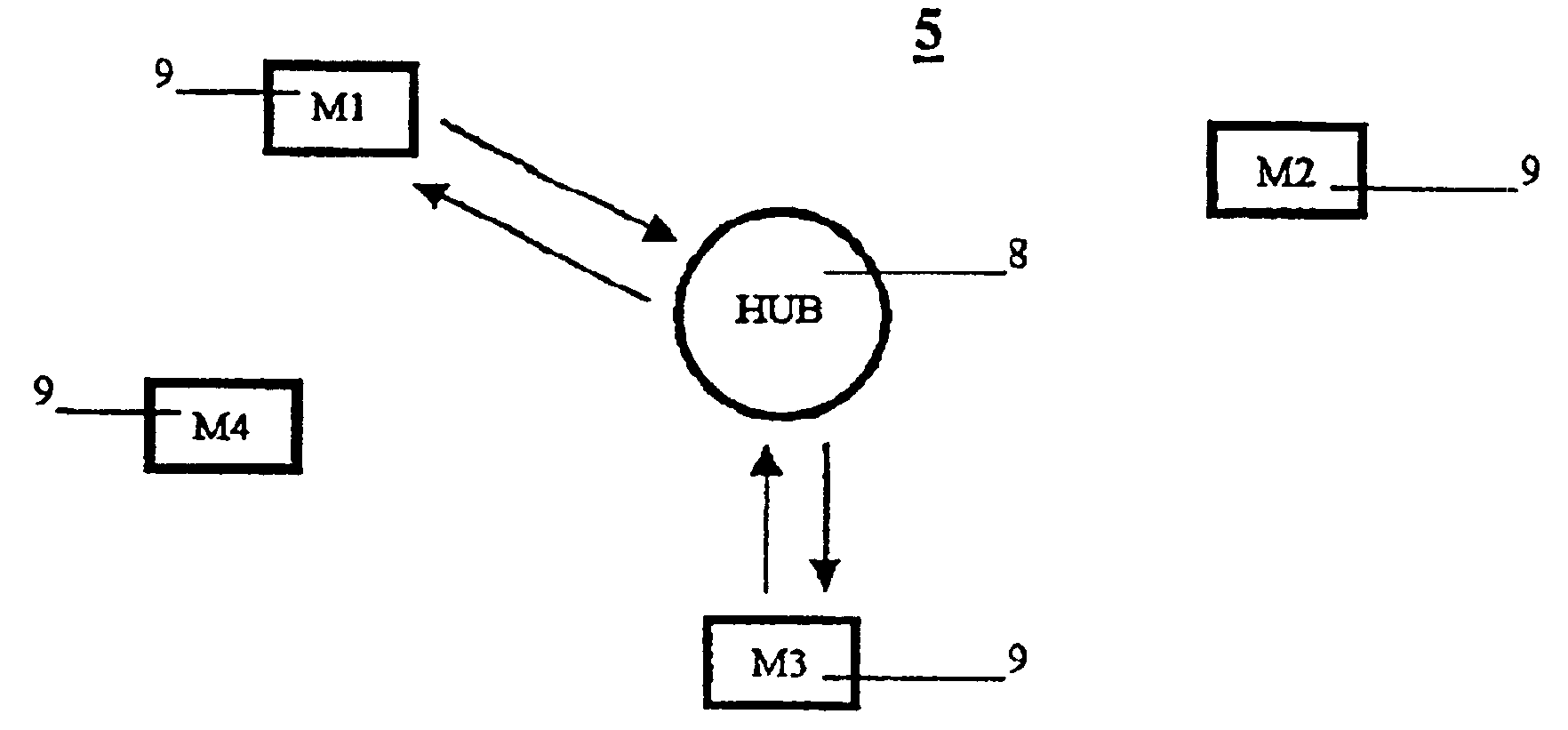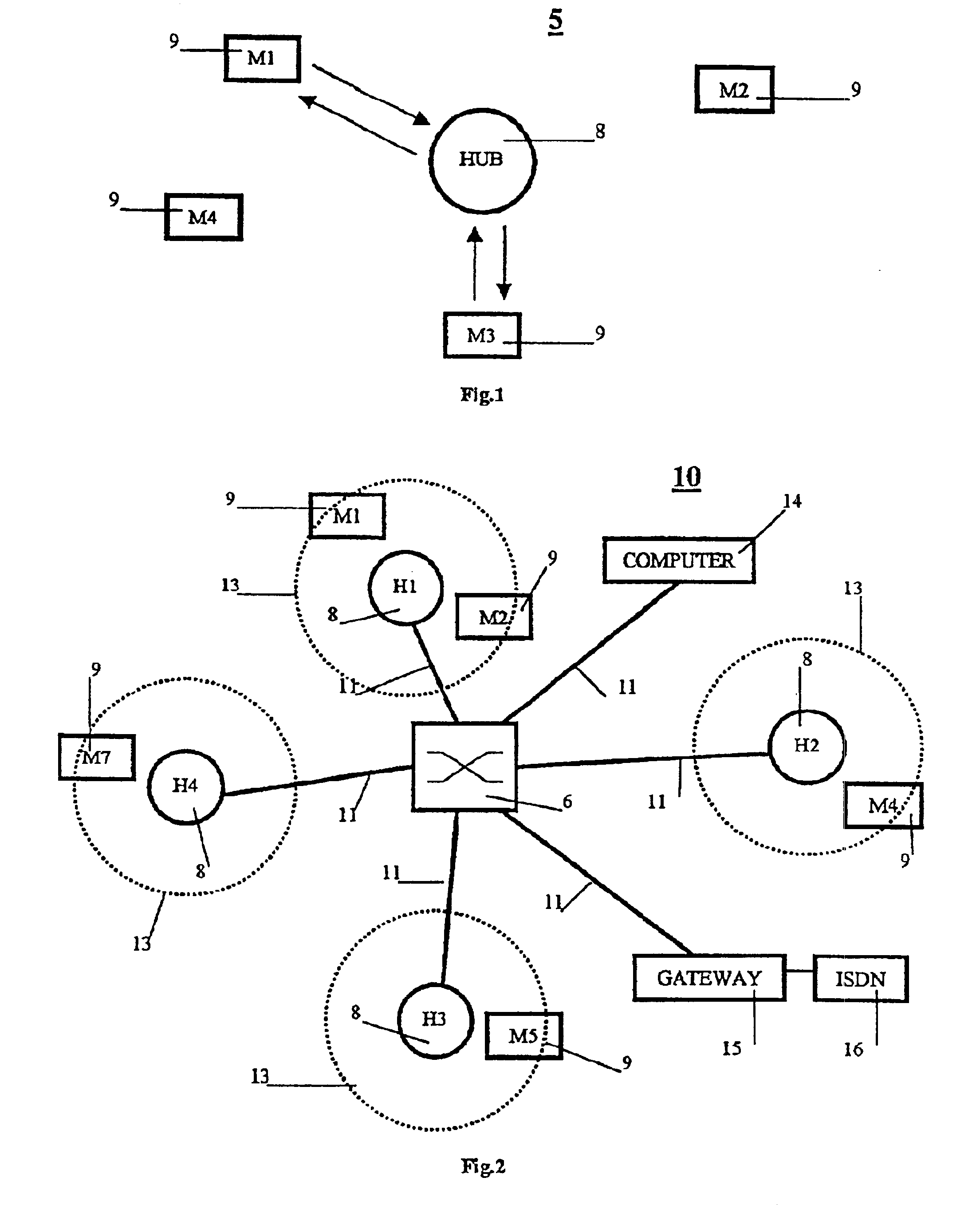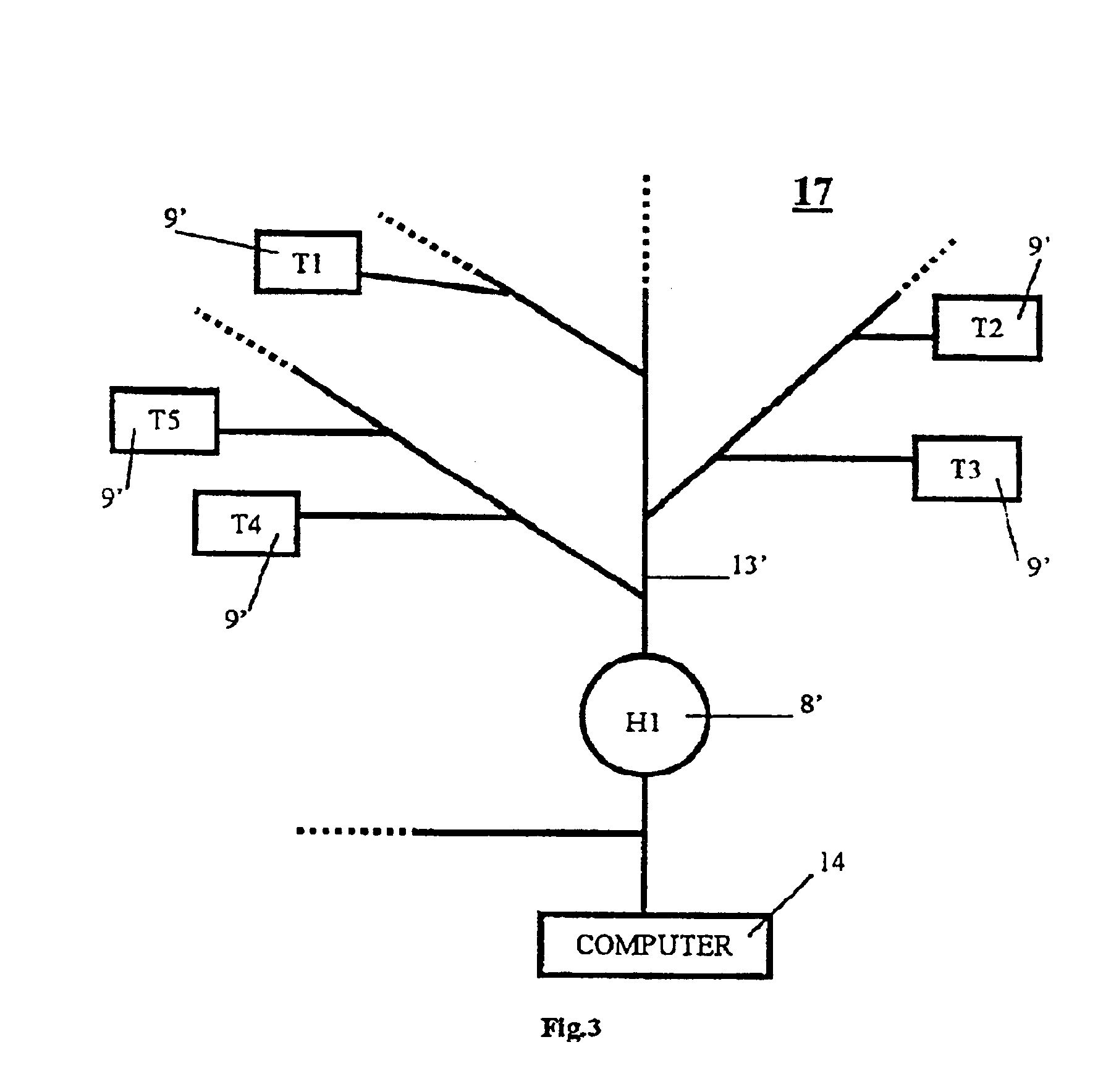Medium access control protocol for data communications
a data communication and access control technology, applied in the field of data communication, can solve the problems of not being able to operate as the sole access method, not being able to meet the dynamic bandwidth requirements of a local area network (lan) environment, and not being able to achieve the effect of maximising the probability of successful transmission
- Summary
- Abstract
- Description
- Claims
- Application Information
AI Technical Summary
Benefits of technology
Problems solved by technology
Method used
Image
Examples
Embodiment Construction
Network Configuration and Elements
FIG. 1 shows a simplified form of a wireless system 5, in which a single transceiving hub station 8 facilitates data communications between a number of distributed transceiving mobile stations 9. The mobile stations 9 can be mobile within a cell (not shown) controlled by the hub station 8. The hub station 8 acts to coordinate bidirectional data communications between the mobile stations 9, in the example shown, between stations M1 and M3.
FIG. 2 shows a wireless LAN system 10. Four hub stations (H1-H4) 8 are interconnected via a backbone network, in this case star cabled links 11 connected to a switching unit 6. The star network 11 and switching unit 6 equally can be replaced by another backbone network with different topology, including a ring network, and with different media including wireless. Each hub station 8 has an associated wireless cell 13 within which are located various mobile stations (M1-M7). A computing device 14 also has connection t...
PUM
 Login to View More
Login to View More Abstract
Description
Claims
Application Information
 Login to View More
Login to View More - R&D
- Intellectual Property
- Life Sciences
- Materials
- Tech Scout
- Unparalleled Data Quality
- Higher Quality Content
- 60% Fewer Hallucinations
Browse by: Latest US Patents, China's latest patents, Technical Efficacy Thesaurus, Application Domain, Technology Topic, Popular Technical Reports.
© 2025 PatSnap. All rights reserved.Legal|Privacy policy|Modern Slavery Act Transparency Statement|Sitemap|About US| Contact US: help@patsnap.com



